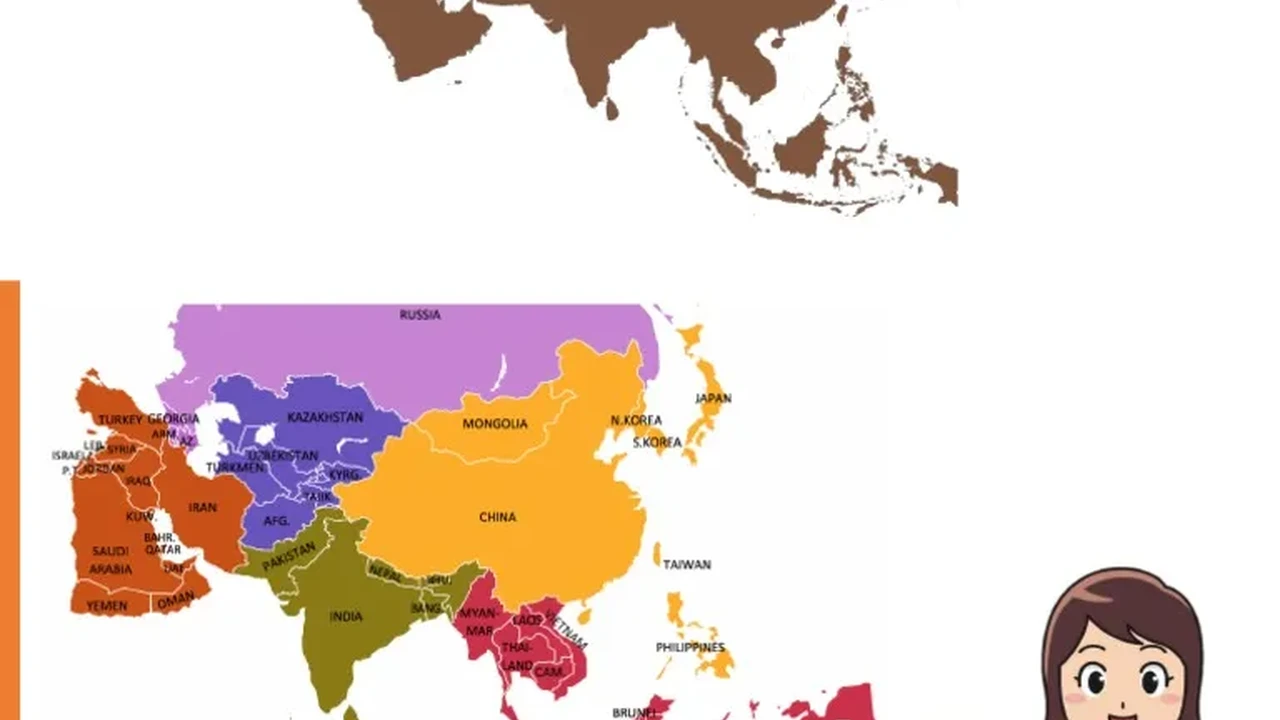Southeast Asia Culture Guide
Explore the rich and diverse cultures of Southeast Asia. This guide provides insights into the traditions, customs, and etiquette of various countries in the region. Navigate cultural differences with grace and respect.

Understanding Southeast Asian Culture Key Aspects
Southeast Asia is a melting pot of cultures, influenced by its geography, history, and interactions with various civilizations. From the ancient kingdoms of Angkor to the colonial legacies of European powers, the region boasts a rich tapestry of traditions, beliefs, and practices. Understanding these key aspects is crucial for any digital nomad looking to immerse themselves in the local communities and build meaningful connections.
Religious Influences Shaping Culture
Religion plays a significant role in shaping the cultural landscape of Southeast Asia. Buddhism, Islam, Hinduism, and Christianity are all widely practiced, each leaving its unique mark on the region's art, architecture, music, and social norms. In Thailand, Buddhism is deeply ingrained in daily life, influencing everything from social interactions to artistic expression. In Indonesia, Islam is the dominant religion, shaping the country's legal and social systems. Understanding these religious influences is essential for navigating cultural differences and showing respect for local customs.
Family Values and Social Hierarchy
Family values are highly cherished in Southeast Asia, and social hierarchy often plays a significant role in interpersonal relationships. Respect for elders is paramount, and decisions are often made collectively within the family unit. Understanding these social dynamics is crucial for building trust and rapport with locals. For example, in many Southeast Asian cultures, it's customary to address elders with honorific titles and to avoid direct eye contact as a sign of respect.
Arts and Traditions Cultural Expressions
Southeast Asia is renowned for its vibrant arts and traditions. From the intricate batik textiles of Indonesia to the mesmerizing shadow puppet performances of Malaysia, the region is a treasure trove of cultural expressions. Traditional dances, music, and crafts are often passed down through generations, preserving the region's rich cultural heritage. Attending local festivals and cultural events is a great way to immerse yourself in the local culture and learn about the region's artistic traditions.
Navigating Cultural Differences in Southeast Asia Etiquette Tips
Navigating cultural differences can be challenging, but with a little preparation and awareness, you can avoid cultural faux pas and build positive relationships with locals. Here are some etiquette tips to help you navigate the cultural landscape of Southeast Asia with grace and respect.
Greetings and Introductions Respectful Interactions
Greetings and introductions are an important part of social interactions in Southeast Asia. In many cultures, it's customary to greet people with a slight bow or a wai (a slight bow with the palms pressed together). Shaking hands is also common, but it's important to be mindful of cultural norms regarding physical contact. In some cultures, it's considered disrespectful to touch someone's head, while in others, it's important to use your right hand when giving or receiving items.
Dining Etiquette Understanding Food Culture
Dining etiquette varies across Southeast Asia, but there are some general guidelines to keep in mind. In many cultures, it's customary to share food and to offer food to others before serving yourself. Using chopsticks is common in some countries, while others prefer to eat with their hands. It's important to observe local customs and to be mindful of table manners. Avoid wasting food and be sure to thank your host for the meal.
Dress Code and Appearance Appropriate Attire
Dress code and appearance can vary depending on the country and the context. In general, it's important to dress modestly, especially when visiting religious sites. Avoid wearing revealing clothing or clothes that are too casual. In some cultures, it's customary to remove your shoes before entering a home or temple. Pay attention to local customs and dress accordingly.
Country Specific Cultural Insights
While there are some common threads that run through Southeast Asian culture, each country has its own unique traditions, customs, and etiquette. Here's a brief overview of some country-specific cultural insights to help you navigate the region with greater awareness.
Thailand Cultural Nuances and Etiquette
Thailand is known for its vibrant culture and its warm hospitality. The country is deeply rooted in Buddhist traditions, and respect for the monarchy is paramount. Avoid criticizing the royal family or engaging in disrespectful behavior towards Buddhist monks. When visiting temples, dress modestly and remove your shoes before entering. The \"wai\" is a common greeting, and it's important to return the gesture as a sign of respect.
Indonesia Cultural Diversity and Customs
Indonesia is a vast archipelago with a diverse range of cultures and religions. Islam is the dominant religion, but Hinduism, Christianity, and Buddhism are also widely practiced. Be mindful of religious customs, especially during Ramadan. When visiting mosques, dress modestly and remove your shoes before entering. The use of the right hand is preferred when giving or receiving items. Avoid public displays of affection.
Malaysia Multicultural Society and Traditions
Malaysia is a multicultural society with a blend of Malay, Chinese, Indian, and indigenous cultures. Respect for elders is highly valued, and family plays a central role in social life. When visiting someone's home, it's customary to remove your shoes before entering. The use of the right hand is preferred when giving or receiving items. Avoid pointing with your index finger, as it's considered rude.
Philippines Cultural Influences and Values
The Philippines has a unique culture that is influenced by its Spanish colonial past and its American heritage. Family values are strong, and respect for elders is deeply ingrained. Catholicism is the dominant religion, and religious festivals are an important part of cultural life. When visiting someone's home, it's customary to bring a small gift. Avoid being overly critical or confrontational.
Vietnam Cultural Heritage and Social Norms
Vietnam has a rich cultural heritage that is shaped by its history and its Confucian traditions. Respect for elders is paramount, and family plays a central role in social life. When visiting someone's home, it's customary to remove your shoes before entering. The use of both hands is preferred when giving or receiving items. Avoid public displays of anger or frustration.
Recommended Resources for Learning More
To further enhance your understanding of Southeast Asian culture, here are some recommended resources:
- Books: \"Culture Shock! series\" for country-specific guides, \"Lonely Planet Southeast Asia on a Shoestring\" for travel tips with cultural insights.
- Websites: \"Asian Efficiency\" for productivity tips tailored to Asian cultures, local tourism websites for information on festivals and events.
- Apps: Google Translate for language assistance, CultureMee for cultural insights and etiquette.
Adapting and Respecting Local Customs
Ultimately, the key to navigating Southeast Asian culture is to be open-minded, respectful, and willing to learn. By understanding the region's history, traditions, and customs, you can build meaningful connections with locals and enrich your travel experiences. Embrace the opportunity to immerse yourself in the local culture and to learn from the people you meet along the way. Remember that cultural sensitivity is crucial for a positive and rewarding digital nomad experience.
:max_bytes(150000):strip_icc()/277019-baked-pork-chops-with-cream-of-mushroom-soup-DDMFS-beauty-4x3-BG-7505-5762b731cf30447d9cbbbbbf387beafa.jpg)






